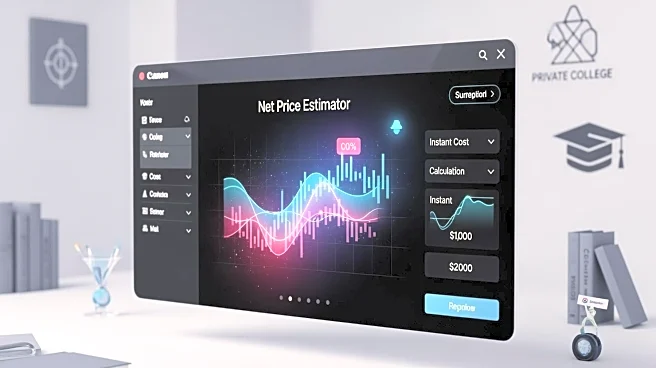What's Happening?
Twenty-two selective private colleges have introduced a new net cost estimator designed to simplify the process of understanding college costs. Developed by economist Phil Levine, the tool uses household
income as the sole data point to predict tuition costs, offering a range of possible prices and a 'best estimate' of actual costs. This initiative aims to provide clarity on the real cost of attendance, which is often lower than the advertised sticker price. Washington University in St. Louis has been piloting the tool, receiving positive feedback from students and counselors. The estimator is intended to encourage families to explore college pricing in greater detail, complementing more complex calculators.
Why It's Important?
The introduction of the Instant Net Price Estimator is significant as it addresses the common misconception about the affordability of private college education. By providing a clearer picture of actual costs, the tool may influence prospective students' decisions to apply, potentially increasing enrollment at these institutions. The initiative also highlights the importance of transparency in higher education pricing, which could lead to broader shifts in how families perceive college costs. As colleges strive to meet students' financial needs, tools like this can play a crucial role in demystifying the financial aid process and making higher education more accessible.
What's Next?
The rollout of the Instant Net Price Estimator may prompt other colleges to adopt similar tools, further enhancing transparency in college pricing. As more institutions implement this technology, it could lead to a reevaluation of tuition pricing strategies and financial aid policies. Additionally, the tool's success may encourage colleges to develop more user-friendly resources that simplify the financial aid application process, potentially increasing student engagement and application rates.











